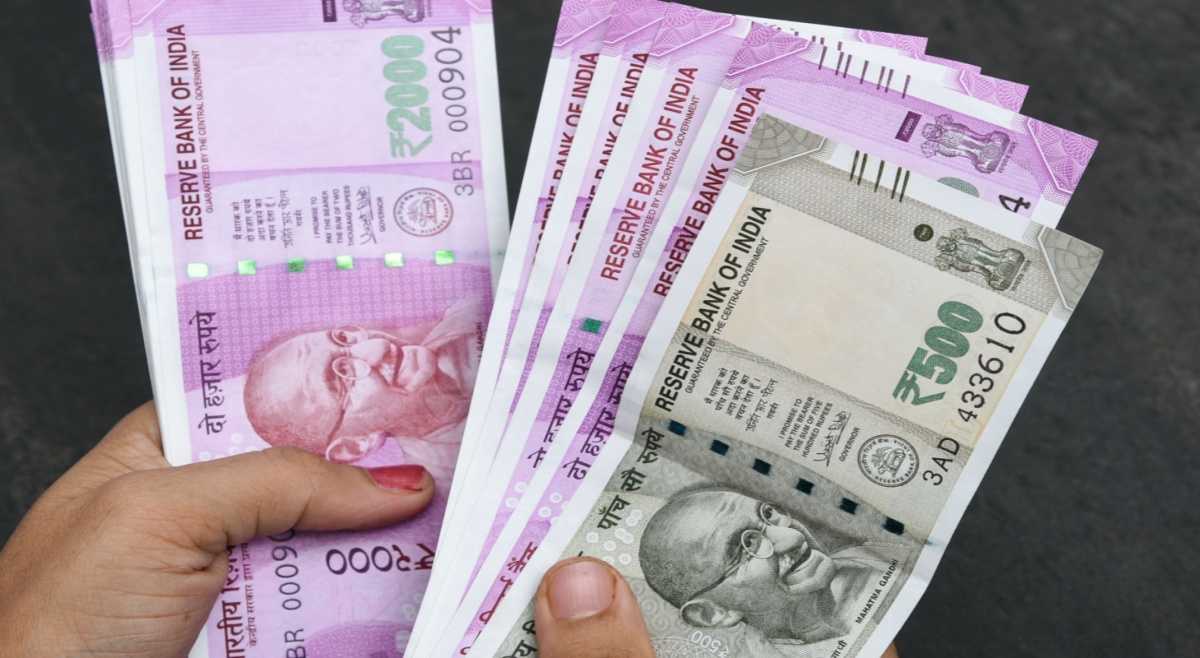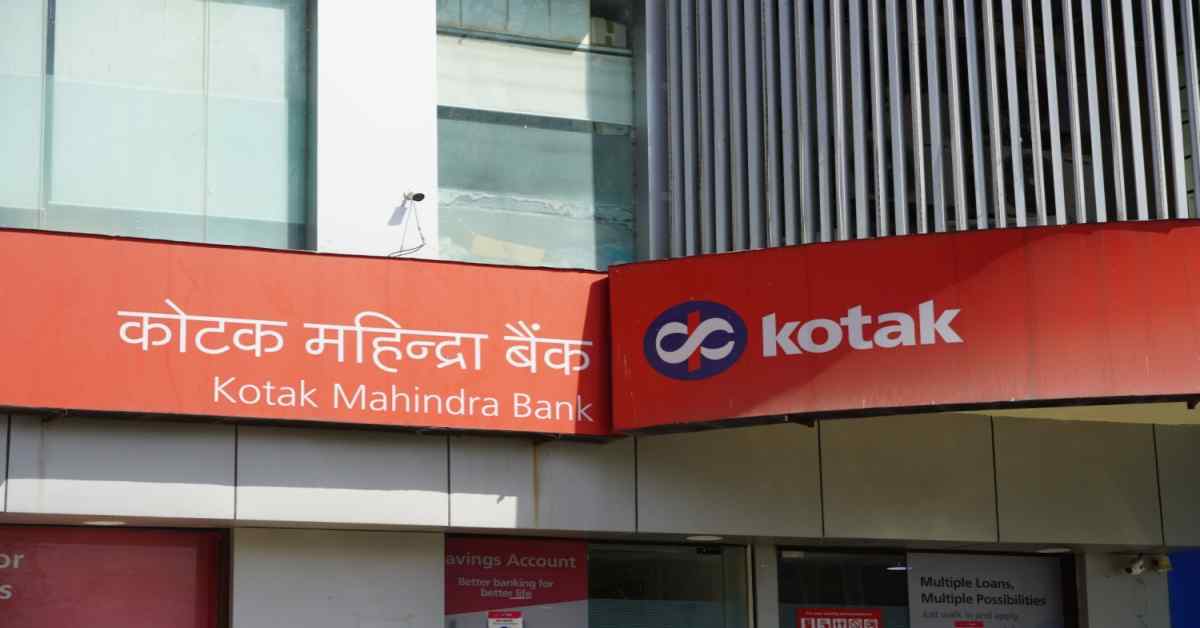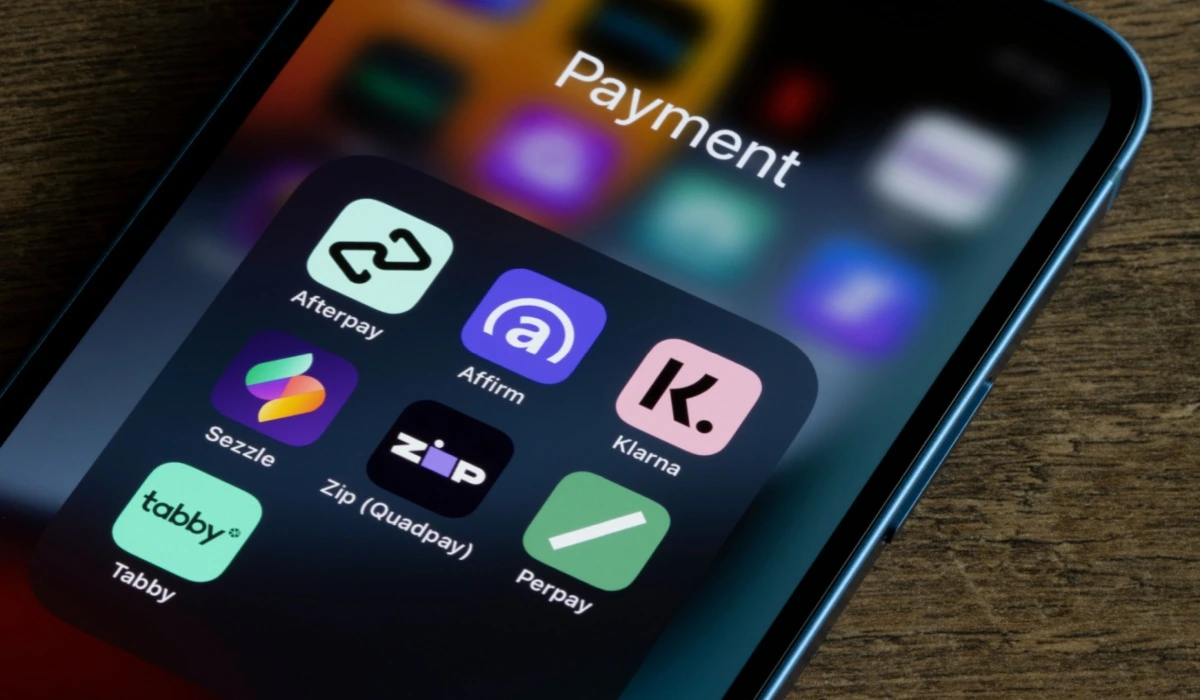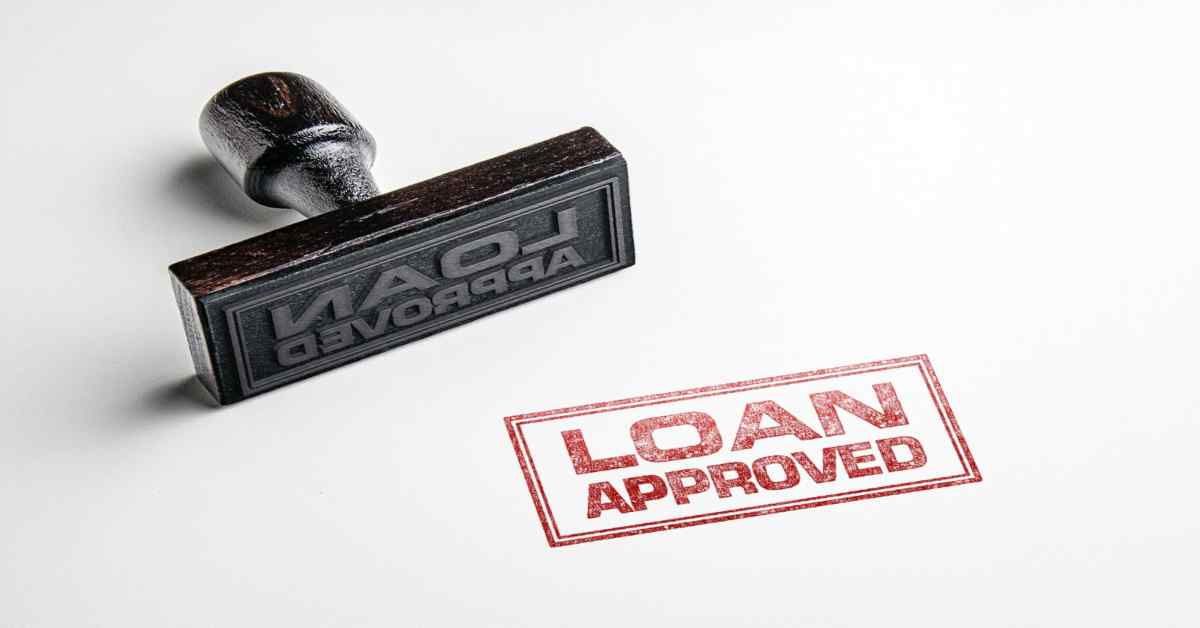Table of Contents
Quality Service Guarantee Or Painting Free

Get a rental agreement with doorstep delivery

Find the BEST deals and get unbelievable DISCOUNTS directly from builders!

5-Star rated painters, premium paints and services at the BEST PRICES!
Loved what you read? Share it with others!


Submit the Form to Unlock the Best Deals Today
Help us assist you better
Check Your Eligibility Instantly

Experience The NoBrokerHood Difference!
Set up a demo for the entire community
₹20 Lakh Personal Loan: How to Get Instant Approval?
Table of Contents
In the pursuit of dreams, aspirations, or unforeseen financial needs, a ₹20 lakh personal loan can be a game-changer. This blog serves as your ultimate guide, covering everything from understanding personal loans to the application process and navigating repayment.
Understanding Personal Loans: A Brief Overview
Personal loans are unsecured loans that provide individuals with a lump sum amount for various purposes. Unlike secured loans, personal loans don't require collateral, making them a versatile financial tool.
Why Opt for a ₹20 Lakh Personal Loan?
Choosing a ₹20 lakh personal loan can be a strategic financial move for several compelling reasons:
Quality Service Guarantee Or Painting Free

Get a rental agreement with doorstep delivery

Find the BEST deals and get unbelievable DISCOUNTS directly from builders!

5-Star rated painters, premium paints and services at the BEST PRICES!
1. Versatility of Use
- Home Renovations: Upgrade and beautify your living space.
- Medical Expenses: Address unexpected healthcare costs.
- Education: Fund your or your loved one's education.
- Debt Consolidation: Combine multiple debts for easier management.
- Business Expansion: Inject capital into your business.
- Dream Vacation: Fulfil your travel aspirations.
2. No Collateral Requirement
- Unlike secured loans, a personal loan doesn't require collateral, eliminating the risk of losing assets in case of default.
3. Quick Disbursement
- Personal loans are known for their speedy processing, providing timely financial assistance when needed urgently.
4. Financial Emergency Handling
- Acts as a financial safety net during unexpected emergencies, ensuring you have immediate access to funds.
5. Flexible Repayment Tenure
- Lenders often offer flexible repayment tenures, allowing you to choose a timeframe that suits your financial capabilities.
6. Minimal Documentation
- The application process for personal loans is typically streamlined, requiring minimal documentation compared to other loan types.
7. Enhancement of Credit Score
- Successfully managing a substantial personal loan can positively impact your credit score, enhancing your financial credibility.
8. Interest Rates Comparatively Lower
- While personal loan interest rates vary, they are often lower than those associated with credit cards and other forms of unsecured credit.
9. Consolidation of High-Interest Debts
- If you have multiple high-interest debts, a personal loan can be used to consolidate them into a single, more manageable repayment.
10. Planning Significant Life Events
- Whether it's a wedding, home purchase, or any other major life event, a ₹20 lakh personal loan provides the financial backing for your plans.
11. Investment Opportunities
- Utilise the loan for strategic investments that may yield returns, such as starting a side business or investing in stocks.
12. Maintaining Liquidity
- Rather than depleting your savings, a personal loan allows you to maintain liquidity for unforeseen expenses or investment opportunities.
Eligibility Criteria for a ₹20 Lakh Personal Loan: What Lenders Look For?
When considering a ₹20 lakh personal loan, meeting the eligibility criteria is crucial for a successful application. Lenders assess various factors to ensure that borrowers can responsibly manage the loan. Here's what lenders typically look for:
1. Credit Score
One of the primary considerations is your credit score. This three-digit number reflects your creditworthiness and financial history. A higher credit score, generally above 750, indicates a responsible credit behaviour and enhances your chances of loan approval. Lenders may have a minimum credit score requirement, so it's essential to check and improve your score if necessary.
2. Income Stability
Lenders want assurance that you have a stable and sufficient income to repay the loan. Salaried individuals need to provide salary slips, while self-employed individuals may need to submit income tax returns and business financial statements. A steady income stream improves your eligibility and supports your loan repayment capacity.
3. Employment Status
Your employment status plays a crucial role. Lenders often prefer borrowers with a stable job or business. Salaried individuals may need to provide an employment letter, while self-employed individuals must furnish proof of their business existence and financial stability.
4. Age Criteria
Lenders have specific age brackets for loan eligibility. While the minimum age is typically around 21 years, the maximum age could range from 58 to 65 years. The age criteria vary among lenders, and it's essential to check this before applying.
5. Debt-to-Income Ratio
Your debt-to-income ratio, which is the proportion of your monthly income allocated to debt repayment, is assessed by lenders. A lower debt-to-income ratio indicates a healthier financial position and a higher capacity to take on additional debt.
6. Employer Reputation
For salaried individuals, the reputation of the employer can impact loan approval. Lenders may have a list of preferred employers or industries with a positive credit history, making employees from such organisations more eligible.
7. Relationship with the Bank
Existing relationships with the lender, such as holding a savings account or having a history of timely repayments, can positively influence your eligibility. Some banks offer preferential terms to existing customers.
8. Documentation
Submitting accurate and complete documentation is crucial. Common documents include proof of identity, address, income, employment, and recent bank statements. Ensure all documents are up-to-date and in line with the lender's requirements.
9. Loan Amount and Tenure
Your eligibility may also depend on the loan amount and tenure you choose. Lenders may have specific criteria for different loan amounts, and longer tenures might require more stringent eligibility checks.
10. Credit History
Apart from your credit score, lenders evaluate your credit history, including any outstanding loans or credit card dues. A positive credit history enhances your credibility as a borrower.
Documents Required for a ₹20 Lakh Personal Loan
When applying for a ₹20 lakh personal loan, having the right set of documents is crucial to ensure a smooth and hassle-free application process. Lenders use these documents to verify your identity, assess your financial stability, and determine your eligibility. Here's a comprehensive list of documents you may need:
1. Proof of Identity (Any One)
- Aadhar Card
- Passport
- Voter ID
- Driver's Licence
2. Proof of Address (Any One)
- Aadhar Card
- Passport
- Utility Bills (Electricity, Water, Gas)
- Rental Agreement
3. Proof of Age (Any One)
- Birth Certificate
- Passport
- School Leaving Certificate
- PAN Card
4. Proof of Income for Salaried Individuals
- Salary Slips: Latest 3 to 6 months
- Bank Statements: Last 6 months
- Employment Certificate: Current employment proof
- Income Tax Returns (ITR): Last 2-3 years
5. Proof of Income for Self-Employed Individuals
- Income Tax Returns (ITR): Last 2-3 years
- Business Registration Certificate
- Profit and Loss Statement
- Bank Statements: Last 6 months
6. Proof of Employment
- For Salaried Individuals: Employment Certificate or Offer Letter
- For Self-Employed Individuals: Business Existence Proof
7. Recent Passport-sized Photographs
- Typically, 2 to 3 passport-sized photographs
8. Loan Application Form
- Filled and signed application form provided by the lender
9. Credit Score Report
- While not mandatory, having your credit score report can provide a clear picture of your creditworthiness.
10. Property Documents (If applicable)
- If you are availing a loan against property, additional documents related to the property may be required.
11. Any Additional Documents Requested by the Lender
- Lenders may request additional documents based on their specific requirements or if any clarification is needed.
Interest Rate on ₹20 Lakh Personal Loan
Below is a hypothetical interest rate table for a ₹20 lakh personal loan with different interest rates and loan terms. Please note that these values are for illustrative purposes only, and actual interest rates may vary based on the lender, your creditworthiness, and prevailing market conditions.
| Interest Rate (%) | Loan Term (Years) | Monthly EMI (Approx.) | Total Interest Paid | Total Repayment Amount |
| 8.0 | 3 | ₹63,105 | ₹3,53,757 | ₹23,53,757 |
| 9.5 | 5 | ₹41,637 | ₹8,98,247 | ₹28,98,247 |
| 11.0 | 7 | ₹32,455 | ₹15,39,634 | ₹35,39,634 |
| 12.5 | 10 | ₹27,696 | ₹32,03,550 | ₹52,03,550 |
| 14.0 | 15 | ₹25,239 | ₹53,62,955 | ₹73,62,955 |
Please use these values for reference and consult with your chosen lender to get accurate and up-to-date information based on your specific situation.
Assumptions:
- Loan amount: ₹20,00,000
- The interest rates provided are annual rates.
- Monthly EMI is calculated using the formula for Equated Monthly Instalment (EMI).
Steps to Apply for a ₹20 Lakh Personal Loan
Securing a ₹20 lakh personal loan involves a systematic application process. Here's a step-by-step guide to help you navigate through the application procedure:
1. Research Lenders
Start by researching and comparing various lenders offering personal loans. Consider factors such as interest rates, processing fees, tenure options, and customer reviews to choose a reliable lender that suits your financial needs.
2. Check Eligibility
Most lenders provide online eligibility calculators. Use these tools to check your eligibility based on factors like income, credit score, and existing financial commitments. This step gives you a preliminary idea of your loan eligibility.
3. Gather Necessary Documents
Collect all required documents, including proof of identity, address, income, and employment. Ensure that these documents are up-to-date and in line with the lender's specifications.
4. Online Application
Visit the lender's official website or use their mobile app to access the online application form. Fill in the required details accurately, including personal information, employment details, and loan amount.
5. Document Submission
Upload scanned copies of the necessary documents as per the lender's requirements. This step is crucial for the verification process, and accurate documentation helps expedite your loan approval.
6. Choose Loan Amount and Tenure
Specify the loan amount you are seeking (in this case, ₹20 lakhs) and select a suitable repayment tenure. Keep in mind that the tenure affects your Equated Monthly Instalments (EMIs).
7. Credit Check
The lender will conduct a credit check to assess your creditworthiness. A higher credit score generally enhances your chances of loan approval.
8. Verification Process
Once you submit your application and documents, the lender will initiate the verification process. This includes validating your identity, income, and employment details.
9. Loan Approval
Upon successful verification, the lender will approve your loan. You will receive an official communication regarding the approval, loan terms, and conditions.
10. Loan Disbursement
After approval, the loan amount will be disbursed to your registered bank account. The disbursement process varies among lenders, and some may disburse the amount within a few working days.
11. EMI Setup
Once the loan is disbursed, set up the EMI payment process. The lender may provide various payment options such as auto-debit, online transfers, or post-dated cheques.
12. Repayment Begins
Start repaying the loan as per the agreed-upon EMI schedule. Ensure timely payments to maintain a positive credit history and avoid any penalties.
13. Monitor Loan Account
Regularly monitor your loan account statements for any discrepancies. Stay informed about your outstanding balance, upcoming payments, and any other relevant details.
Get an Urgent ₹20 Lakh Personal loan with NoBroker InstaCash NOW
In times of urgent financial needs, NoBroker InstaCash emerges as your reliable ally. With a swift and seamless application process, securing a ₹20 lakh personal loan has never been this convenient. When urgency meets reliability, NoBroker InstaCash is your go-to solution for a ₹20 lakh personal loan. Take control of your financial well-being and apply now for an experience that is quick, convenient, and tailored to meet your urgent needs. Your financial peace of mind is just a few clicks away!

Frequently Asked Questions
A1: A personal loan is an unsecured loan that provides borrowers with a lump sum amount for various purposes. It is repaid in fixed instalments over a specified period. Personal loans do not require collateral, making them a versatile financial option.
A2: ₹20 lakh personal loan allows you to borrow up to ₹20,00,000. The actual amount you qualify for may depend on factors such as your income, credit score, and the lending institution's policies.
A3: The interest rate on a personal loan is influenced by factors like your credit score, income, employment stability, and the lender's policies. A higher credit score often leads to lower interest rates.
A4: Yes, many lenders allow prepayment of personal loans. However, it's essential to check the terms and conditions, as some lenders may charge a prepayment penalty. Prepaying can help reduce the overall interest burden.
A5: EMI (Equated Monthly Instalment) is calculated using a formula that considers the loan amount, interest rate, and tenure. Online EMI calculators are available to provide an estimate of your monthly repayments based on these factors.
A6: Eligibility criteria typically include factors like a good credit score, stable income, employment status, age, and existing financial obligations. Lenders may have specific requirements, so it's advisable to check with them.
Recommended Reading

How to Get a ₹50,000 Loan Without a Salary Slip: Fast Approval and Easy Documentation Process
January 31, 2025
55+ views

₹50,000 Personal Loan on PAN Card: Instant Approval, and Quick Disbursement in 2025
January 31, 2025
47+ views

Instant Cash Loan In 5 Minutes: Interest Rates, Repayment and Eligibility in 2025
January 23, 2025
4520+ views

₹5,000 Loan on PAN Card: Fast Approval and Easy Process
January 21, 2025
8138+ views

Kotak Personal Loan Interest Rates – January 2025
January 2, 2025
2897+ views
Loved what you read? Share it with others!
Most Viewed Articles

7 Days Loan Apps List in India: 10 Best Loan Apps for Instant Cash in 2025
January 8, 2025
73421+ views

Low CIBIL Score Loan Apps List: Best Apps for Instant Loans with Bad Credit for 2025
November 29, 2024
52320+ views

Instant ₹5000 Loan: Easy Application Procedure
December 17, 2024
32273+ views

30 Days Loan Apps: Quick Cash Solutions with Flexible Repayment At Lowest Rates for 2025
November 29, 2024
22565+ views

January 15, 2025
21864+ views
Recent blogs in
How to Get a ₹50,000 Loan Without a Salary Slip: Fast Approval and Easy Documentation Process
January 31, 2025 by Nivriti Saha
₹50,000 Personal Loan on PAN Card: Instant Approval, and Quick Disbursement in 2025
January 31, 2025 by Suju
How to Get ₹20000 Loan on PAN Card in 2025: Interest Rates, Repayments and Eligibility
January 28, 2025 by Jessica Solomon
Get ₹5,000 Loan on Aadhaar Card – Quick Approval, Easy Process
January 28, 2025 by Prakhar Sushant
How to Get ₹1,000 Loan on PAN Card Instantly in 2025?
January 26, 2025 by Ananth



Join the conversation!